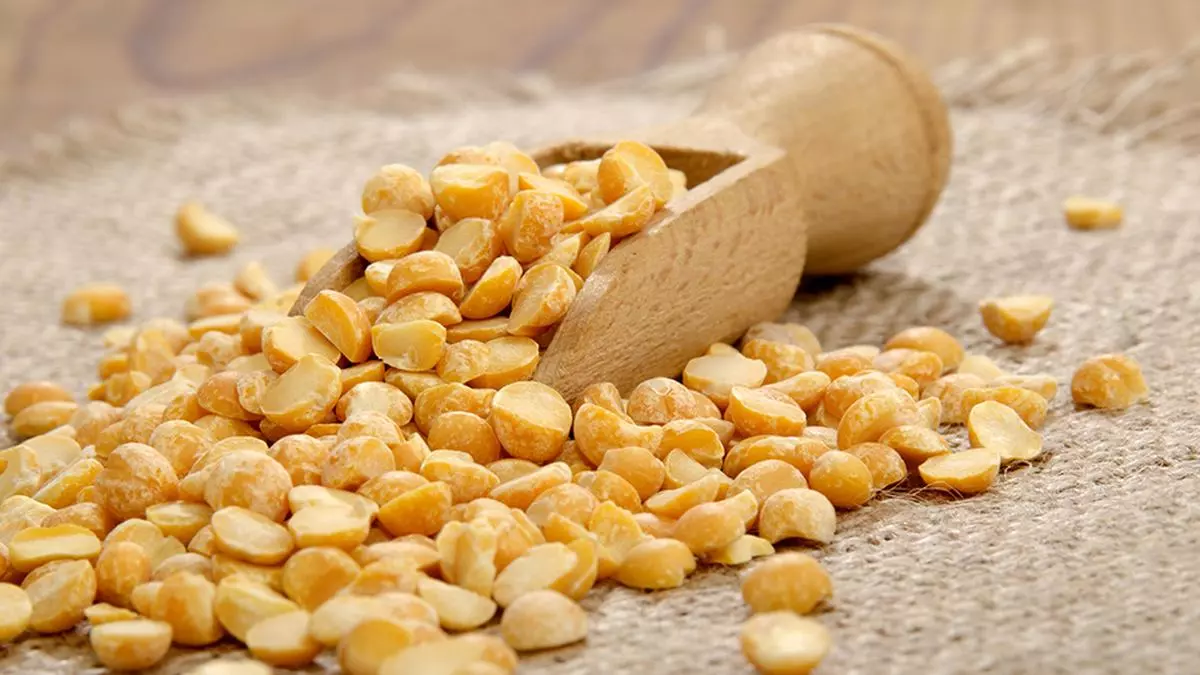Russia pips Canada as top yellow peas exporter to India
Russia has become the largest export of yellow peas to India pipping Canada which has been dominating the market so far, data from the Agricultural and Processed Food Products Exports Development Authority (APEDA) show. The development comes after Russia topped Canada in the Chinese market, where at one point in time Ottawa had over 97 per cent market share, data show. Russia currently has nearly half the share of the Chinese market.
Moscow shipped 4.41 lakh tonnes (lt) of peas to India during the April-July period of the 2024-25 fiscal. This is higher than the 4.01 lt it shipped during the entire 2023-24 fiscal. Canada exported 3.93 lt of yellow peas to India during the April-July period of the current fiscal. It had shipped 1.38 million tonnes during the 2023-24 fiscal.
Logistics costs
“Russia is aggressively exporting yellow peas in the global market. It offers peas at a competitive price and allows trade in Indian rupees. Logistically, too, it is cheaper,” said a New Delhi-based trade expert.
India spent $212.85 million for the 4.41 lt of peas it imported, while for Canadian peas the expenditure was $228.49 million. Currently, Russia is shipping yellow peas to India at $425 a tonne cost and freight for October-November delivery, while Canada is charging $460 for the same period to India. “Over the last two years, Russia’s production and export of yellow peas has increased to record levels. Imports were less as China was not importing from Russia. But now Beijing has increased its import,” said Rahul Chauhan Igrain.
Dynamics decide
Bimal Kothari, Chairman, India Pulses and Grains Association (IPGA), the apex trade body, said market dynamics decide imports, whether it is Russia or Canada. “It all depends on the price. Russia is also very competitive, but cargo is coming from both the countries” he said.
In fact, for October, a lot of shipments have been committed. There are number of vessels coming from Canada also. “Whoever is giving a competitive price, people import from them,” Kothari said.
Russian news agency Interfax said last week that Moscow has obtained the right to supply lentils to India regularly. It quoted the Federal Service for Veterinary and Phytosanitary Surveillance (Rosselkhoznadzor) saying it received a notification from India’s Ministry of Agriculture and Farmers Welfare.
The news agency said Russian supplies of leguminous crops to India increased 23-fold year-on-year to 5,45,000 tonnes between January and September 22, 2024.
Duty-free import
B Krishnamurthy, Managing Director, Four P International, said imports gathered momentum after the Centre reduced the duty on peas import to zero from 35 per cent for three months at the beginning of the year. “Subsequent extensions of the zero duty facility have resulted in prices dropping. Currently, zero duty imports are available till December 31,” he said.
Kothari, when asked if freight is less for importing from Russia due to the its proximity compared with Canada, said there is no such freight advantage. “Vessels coming from Russia are smaller in size and their freight charge is a bit more. Canadian vessels are of Panamax size carrying some 60,000-70,000 tonnes. As a result, freight becomes competitive there,” he said.
Kothari expects the import of yellow peas to be in the range of 3.3-3.5 million tonnes by the end of 2024. Total imports of yellow peas till August 31 could be around 2.2 million tonnes. For September-October, another 7 lt have been contracted. “By end of October, imports could be around 3 million tonnes,” he said.
Lower carryover stocks
With the government extending the import window, “we expect another 3-4 lt of yellow peas to come in during November-December,” said the IGPA Chairman.
At the recent Macau Pulses Congress, traders said Russia’s peas exports are expected to drop to 2.5 million tonnes during 2024-25 from 3.1 million tonnes in 2023-24. They said the pea crop faces problems in southern Russia. Also, Moscow may not have ample carryover stocks as during 2023-24.
The Canadian government expects pea production to be higher at 3.3 million tonnes following good crop conditions in western Canada. It also expects supplies and exports to rise to 3.6 million tonnes and 2.5 million tonnes, respectively.
